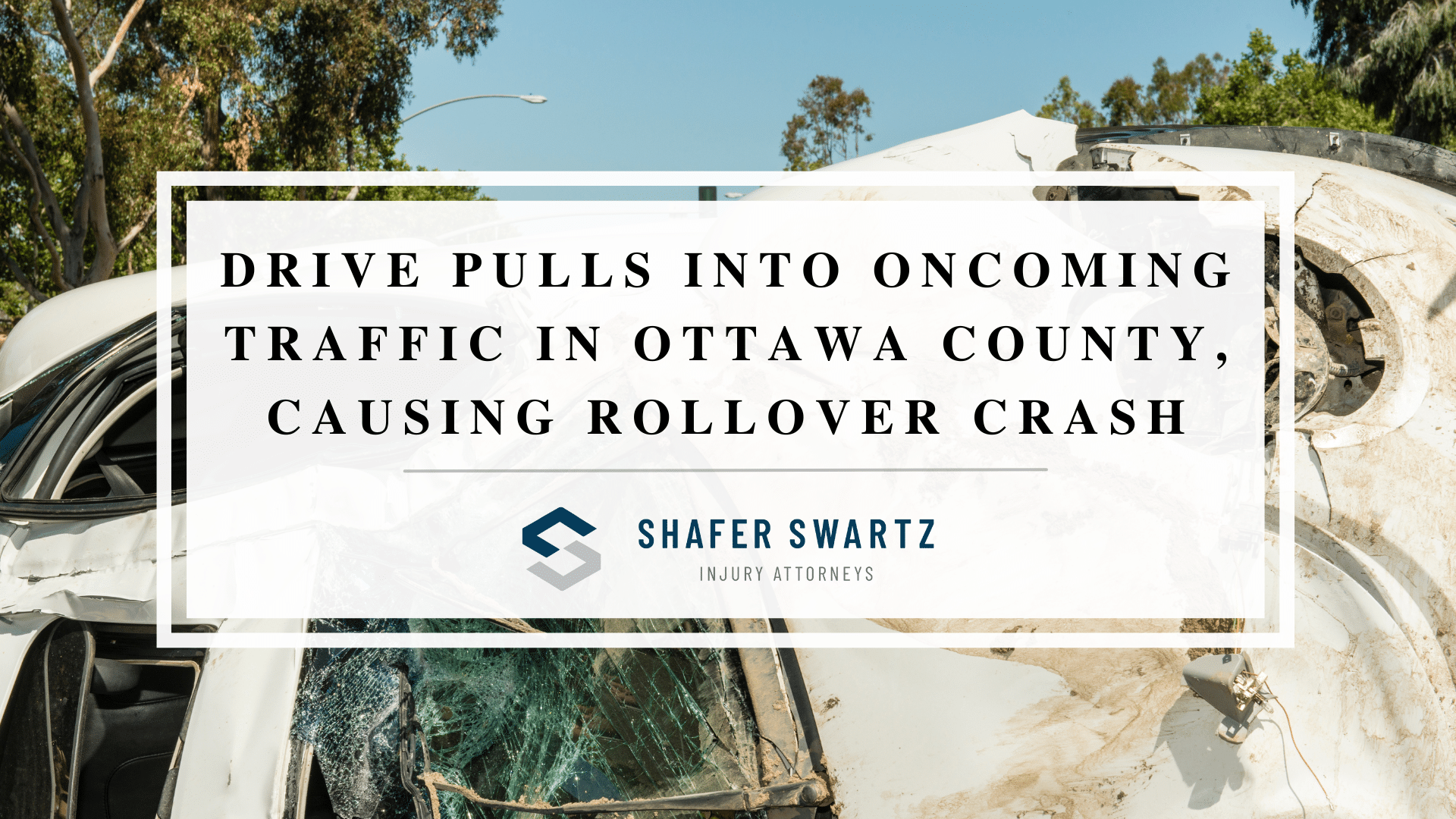
A serious rollover crash in Crockery Township, Ottawa County, sent one driver to the hospital with moderate injuries. The accident occurred on Wednesday, November 3rd, 2021, near Leonard Street. According to police reports, a 24-year-old driver from Grand Haven recklessly pulled into fast-moving traffic while attempting to avoid a slow lane caused by an unrelated accident. This dangerous maneuver resulted in a head-on collision with a Chevy Silverado driven by a 38-year-old Muskegon resident.
The impact of the crash sent the younger driver’s car off the road, where it flipped over multiple times. Thankfully, his passenger, a 22-year-old Muskegon woman, and the Silverado driver were unharmed. The Grand Haven driver, however, sustained moderate injuries and required transport by ambulance to North Ottawa Hospital. Let’s break down what causes rollover crashes, how to avoid them, and what to do if you’re ever in one.
What Is a Rollover Crash?
Rollover crashes occur when a vehicle flips onto its side or roof during a collision. According to the National Highway Traffic Safety Administration (NHTSA), rollovers have a higher fatality rate than other types of car accidents. Despite comprising only a small percentage of total crashes in the U.S., such incidents account for approximately 30 percent of all passenger vehicle occupant fatalities annually.
Common causes of rollover crashes include:
-
- Tripping. When the vehicle tires unexpectedly hit a curb, guardrail, deep pothole, or similar obstacles, it can upset the balance of the vehicle and initiate a rollover.
- Sharp Turns at High Speeds. If a driver takes a turn too quickly or fails to anticipate the curvature of the road, the centrifugal force acting on the vehicle can cause it to tip over.
- Sudden Maneuvers. Swerving to avoid obstacles, overcorrecting after drifting out of lane, or making sudden lane changes can destabilize a vehicle and lead to a rollover.
- Vehicle Flaws. Narrow track width, inadequate suspension systems, or improper weight distribution can make a vehicle more prone to tipping over during evasive maneuvers or collisions.
- External Impacts. Sometimes, even driving perfectly cannot prevent a rollover. Side-impact collisions, particularly on the side where your tires meet the road, create a force that can tip your vehicle.
Unlike a head-on or rear-end collision, where the front of the vehicle is designed to absorb impact, rollovers expose the weaker sides and roof, which offer minimal protection for occupants. This, combined with the violent tumbling action that often leads to ejection even with seatbelts fastened and the potential for multiple, unpredictable impacts, makes rollovers particularly dangerous, leading to potentially fatal consequences.
How to Prevent Rollover Crashes
While you can’t completely eliminate the risk of a rollover, these proactive measures can significantly reduce your chances of experiencing one:
Avoid Distractions
The road demands your full attention. Texting, fiddling with the radio, eating, or any activity that pulls your eyes or focus away from driving dramatically increases your risk. Keep your hands on the wheel, eyes on the road, and mind on the task of driving.
Maintain Your Vehicle
Underinflated tires lose traction more easily and can affect your ability to steer and brake accurately, especially at higher speeds or in adverse conditions. Worn brakes increase your stopping distance and can hinder your ability to stop quickly if needed. Regular maintenance is your safety net.
Drive Responsibly in Bad Weather
Rain, snow, and ice create slick surfaces. Reduce your speed significantly in poor weather, increase following distances, and avoid any sudden braking or steering maneuvers that could lead to a loss of control.
If You’ve Been in a Rollover Accident
The aftermath of a rollover accident can be disorienting and traumatic. It’s essential to take immediate action to protect your health and preserve your legal options.
- Safety First. Check yourself and others for injuries. Call 911 immediately for emergency assistance. Stay clear of traffic and warn oncoming motorists if possible.
- Gather Evidence. If it’s safe to do so, take photos of the scene, damage to vehicles, and injuries. Exchange information with other drivers and witnesses.
- Seek Medical Attention. Never refuse medical attention from first responders. See a doctor as soon as possible, even if you feel fine, to get a thorough evaluation. Some injuries have delayed symptoms.
- Contact an Attorney. An experienced personal injury attorney in Michigan can guide you through the insurance claim process, investigate the details of the accident, and ensure you get maximum compensation for your injuries.
Let Us Handle the Legal Battle
The trauma of a rollover crash can be overwhelming. Let Shafer Swartz PLC be your advocate, lifting the legal burden so you can focus on recovery. With years of experience representing vehicle accident victims, our seasoned Muskegon personal injury attorneys have the knowledge, resources, and tenacity to fight for the justice and compensation you deserve. Contact us today at (231) 722-2444 or reach out to us here for a free consultation.
More about this story can be found here: https://www.wzzm13.com/article/news/driver-pulls-in-front-of-oncoming-traffic-causing-rollover-crash-that-injured-one-in-ottawa-county/69-70f11d66-eca5-4a3b-bd58-3852565ce689

